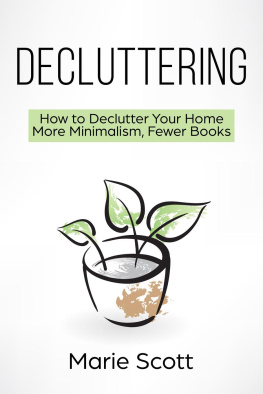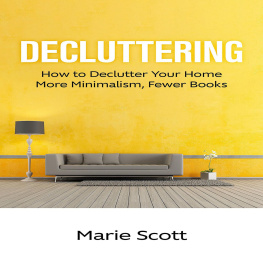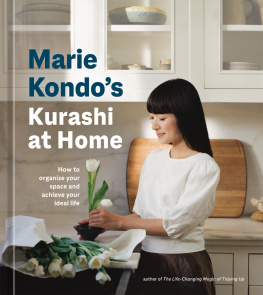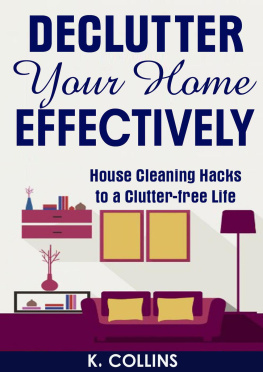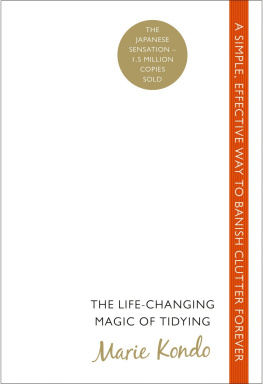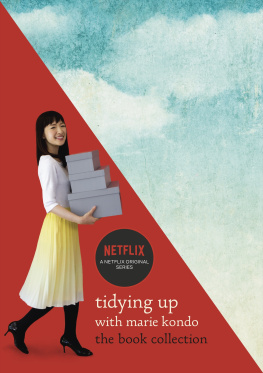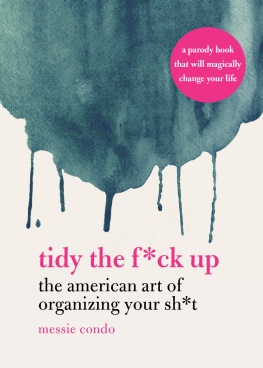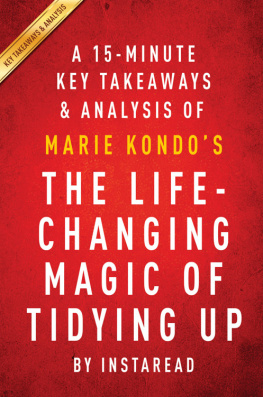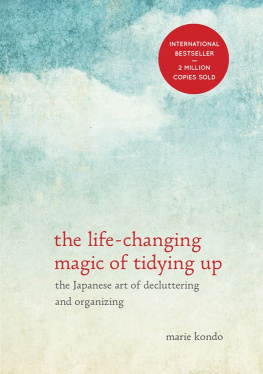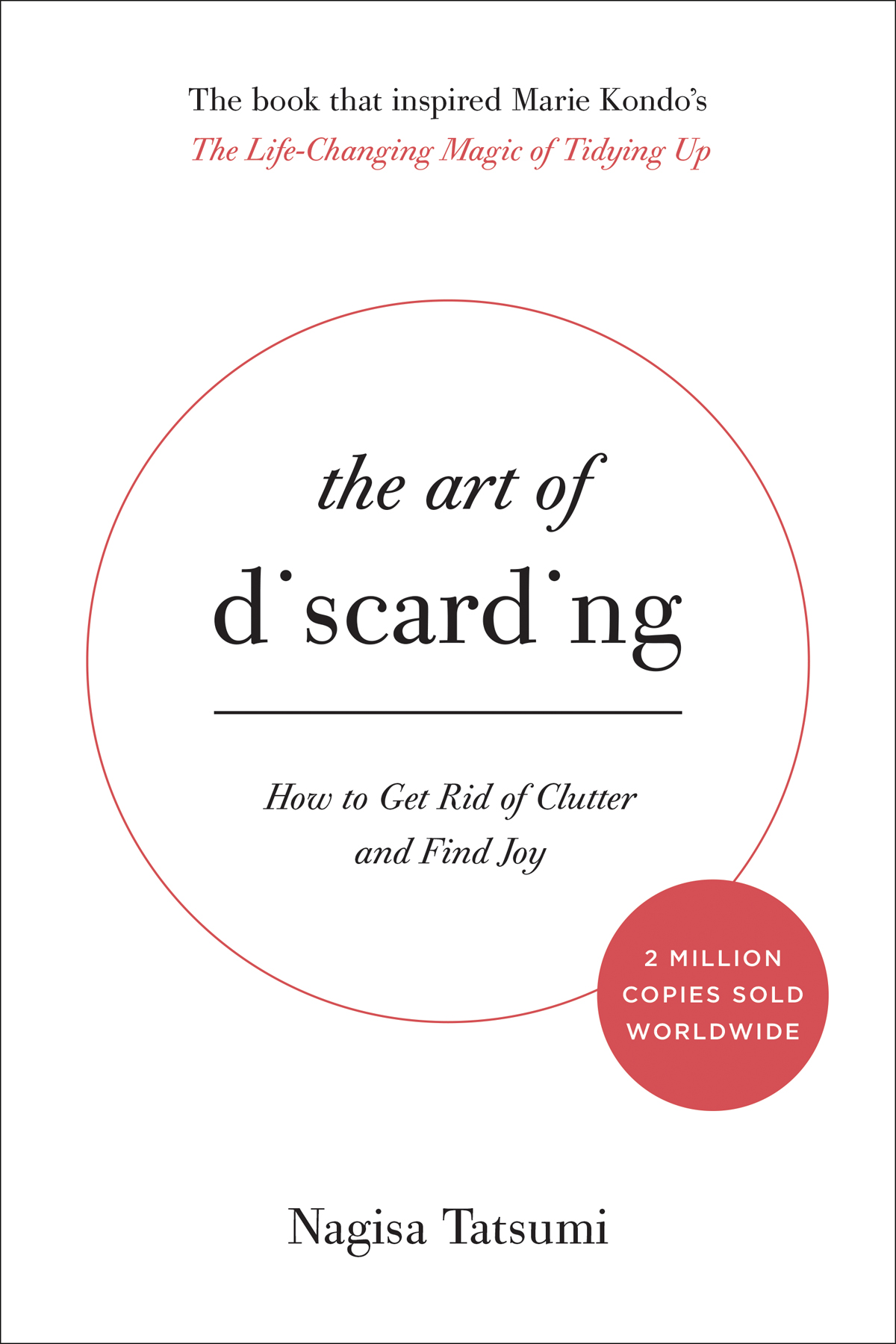Thank you for buying this ebook, published by HachetteDigital.
To receive special offers, bonus content, and news about ourlatest ebooks and apps, sign up for our newsletters.
Copyright 2005 Nagisa Tatsumi
Translation copyright 2017 Angus Turvill
Hachette Book Group supports the right to free expression and the value of copyright. The purpose of copyright is to encourage writers and artists to produce the creative works that enrich our culture.
The scanning, uploading, and distribution of this book without permission is a theft of the authors intellectual property. If you would like permission to use material from the book (other than for review purposes), please contact permissions@hbgusa.com. Thank you for your support of the authors rights.
Hachette Books
Hachette Book Group
1290 Avenue of the Americas
New York, NY 10104
HachetteBooks.com
twitter.com/hachettebooks
First published in Japan with the title Suteru! Gijutsu by Takarajimasha, Inc., Tokyo, Japan
English translation rights arranged with Takarajimasha, Inc. through The English Agency (Japan) Ltd
First published in Great Britain in 2017 by Yellow Kite
An imprint of Hodder & Stoughton
A Hachette UK company
First U.S. Edition: March 2017
Hachette Books is a division of Hachette Book Group, Inc. The Hachette Books name and logo are trademarks of Hachette Book Group, Inc.
The publisher is not responsible for websites (or their content) that are not owned by the publisher.
The Hachette Speakers Bureau provides a wide range of authors for speaking events. To find out more, go to www.hachettespeakersbureau.com or call (866) 376-6591.
Library of Congress Control Number: 2017930088
ISBNs: 978-0-316-55892-1 (paper over board); 978-0-316-55893-8 (ebook)
E3-20170204-JV-PC
The subject of tidying first caught my attention when I was in junior high school. The catalyst was a book called The Art of Discarding by Nagisa Tatsumi, which explained the importance of getting rid of unnecessary things. I can still remember the shock and surprise I felt as I read it on the train. I became so absorbed that I almost missed my stop. Once home, I went straight to my room with a handful of garbage bags and stayed closeted for several hours. Although the room was small, by the time I was finished I had eight bags full of stuff. I had forgotten that most of these things even existed. I sat motionless on the floor for about an hour afterward staring at the pile of bags and wondering, Why on earth did I bother keeping all this stuff?
Marie Kondo, from The Life-Changing Magic of Tidying Up
T hrowing stuff out: its a fundamental issue.
Everyone these days has too much stuff. We keep chucking it out, but it keeps on accumulating. At work, we face endless piles of paper; at home, however much storage space we have, its never enough. Things proliferate and our living space shrinks. Were surrounded. We know we have to do something. If only we could get rid of it all, what a relief that would be!
The 1990s saw a boom in ecological thinking, which has extended into the new millennium: be kind to the Earth Recycle Dont produce rubbish And this has generated a new way of thinking about stuff and what we need versus what we want. But were still crowded out with it. Why? How come this flood of things never seems to ebb away?
We know how good it would feel if all this stuff was goneso why we do we keep it? Why do we always feel guilty about getting rid of things? Lets look at these questions a little more closely.
STUFF AND OUR SENSE OF WASTE
In the past, things were precious. Before the start of mass production and mass consumptionrelatively recently, in factthings were cherished. They were looked after and used for as long as possible. Even when theyd lost their original purpose, other uses were found for them. And only once all possible functions were exhausted were they finally discarded. It was the same with food. People were taught to eat every last grain of rice in their bowls. It was all about using something to the full, discarding it, and only then obtaining something new. That was the cycle and, against this background, a sense of shame at wastefulness (mottainai in Japanese) became a virtue.
But lifes different now.
In the 1960s and 70s new and exciting electrical products sold precisely because they were new and exciting. There was a belief that new = good, and so things that were old were immediately replaced. More and more thingselectrical goods, fashion, etc.came flooding into our lives and, by the end of the 1980s, the act of purchasing had become an end in itself.
Weve become used to this kind of spending, but because we are no longer buying out of necessity, things inevitably accumulate at a far greater pace than they are used up, and so we are drowning in stuff.
The switch from an era when things were precious to an era of over-supply was too sudden. Were stuck between our traditional sense of wastefulness (mottainai) and the new world where things proliferate.
BE POSITIVE ABOUT DISCARDING
We have to address this dilemma. If we carry on like this, well never be free of the spell that things have over us.
Can a more ecologically aware or economical lifestyle help us break the spell? If we look after things and only buy whats necessary, will we be free? Well, it wouldnt work for me. I wouldnt want to stop buying things. Reducing clutter feels good, but youd have to be very stoic to enjoy life without new stuff.
It feels good to have things you like around you. It makes you happy to wear new clothes. I have a TV and newspapers, but I want magazines too. If I want to buy some new plates or a jug, I dont want to be thinking theres something virtuous about preventing myself from doing so. Saving moneys no good if you cant enjoy life.
So we want to enjoy a comfortable life, but we dont want things to accumulate; nor do we want to create a sense of waste. Is that possible? And, if so, how?
This book is here to help. What I want to propose is a positive attitude to discarding. To get to grips with our cluttered lives we have to start clearing things out. Instead of worrying about wastefulness, let the task of disposal be an opportunity to reflect on the real value of your possessions. Look at the things youve allowed to accumulate. Thinking about why youve got them will help give you a sense of why they have a hold on you. And as you sort out what to throw away and what to keep, youll come to realize whats really necessary.
THE ART OF DISCARDING AND THE ART OF LIVING
First off, you need to reassess your relationship with physical objects. The ten attitudes to discarding outlined in Part One will help you. Im not saying you should change your mindset completely, but if you worry about throwing things away, perhaps its time to adjust your thinking a little. Just try adopting the key points from this section that strike a chord with you. This may help loosen the hold that things have on you. Part Two introduces ten practical disposal strategies. As with Part One, try what makes sense to you. If just one of the strategies becomes a habit, life will start to feel much better. In Part Three, theres some general information that should make it easier for you to find ways to get rid of things. I hope youll find it useful to combine this with suggestions from the other two parts.


